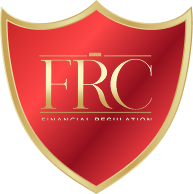In recent years, the global shift towards environmental responsibility has sparked considerable change across various sectors. For wealth management, one of the most profound effects has been the rise of climate-conscious investors seeking to align their financial strategies with their personal values, specifically when it comes to tackling climate change. These investors, motivated by concerns about sustainability and the environment, are increasingly looking for wealth management strategies that not only promise financial returns but also promote positive environmental outcomes.
As a result, wealth managers face an increasingly complex challenge: how to balance the goal of providing solid financial returns with the desire to create an impactful, climate-conscious portfolio. This has led to a growing trend of sustainable investing, with an emphasis on environmental, social, and governance (ESG) criteria, as well as other climate-focused strategies. For those looking to explore more on this subject, the Investment Advisor Certification Guide can offer essential insights into how wealth managers can build climate-conscious investment portfolios.
This article will delve into various wealth management strategies designed for climate-conscious clients, providing insights on how to integrate sustainability and environmental responsibility into financial portfolios, while also navigating the challenges and opportunities this sector presents.
The foundation of wealth management for climate-conscious clients rests on the principles of sustainable investing. Sustainable investing, sometimes referred to as responsible investing, is a broad term that includes various approaches to managing investments in a way that considers environmental, social, and governance (ESG) factors.
For climate-conscious clients, the focus is primarily on reducing the carbon footprint of their investments and supporting industries, companies, and projects that contribute to the fight against climate change. This may include investing in renewable energy, sustainable agriculture, or green technologies, as well as divesting from industries that contribute significantly to carbon emissions, such as fossil fuels.
Sustainable investing can take many forms, including:
Negative Screening: Avoiding investments in companies or industries that have a negative environmental impact, such as fossil fuel extraction, coal mining, or other polluting industries.
Positive Screening: Actively seeking investments in companies that are leaders in environmental sustainability, renewable energy, or carbon reduction initiatives.
Impact Investing: Focusing on investments that generate measurable, positive environmental and social impacts alongside financial returns. This can include funding projects like reforestation, clean water access, or energy-efficient infrastructure.
ESG Integration: Incorporating environmental, social, and governance factors into the investment decision-making process, ensuring that companies with strong sustainability practices are prioritised.
For wealth managers, understanding and aligning with the specific goals of climate-conscious clients is crucial. While some clients may prioritise divesting from harmful industries, others may prefer a more proactive approach that focuses on building a portfolio that actively contributes to environmental solutions. Tailoring wealth management strategies to the client’s values and financial objectives is essential to building a successful and impactful portfolio.
The first step in creating a climate-conscious wealth management strategy is to thoroughly understand the client’s values, priorities, and financial goals. Every client is unique, and their definition of “climate-conscious” will differ depending on their personal preferences and worldview.
For instance, one client may prefer to avoid investing in any company involved in fossil fuels, while another may be more focused on supporting companies that are working toward carbon neutrality. Some may be interested in generating measurable environmental impacts, such as reducing carbon emissions, while others may want to support broader sustainability goals like improving water use efficiency or promoting social equity through their investments.
By engaging in an in-depth conversation with clients about their values and vision for the future, wealth managers can better understand what type of investment strategy would align with their clients' goals. At this stage, wealth managers should aim to ask thought-provoking questions to explore how deeply clients care about different sustainability issues and how they wish their wealth to be managed with regard to those concerns.
Once the client’s values are understood, the next step is to establish clear financial and environmental objectives. For example, some clients may aim to reduce the carbon footprint of their investments by a specific percentage, while others may aim for broader sustainability goals like increasing investments in renewable energy or sustainable agriculture.
At this stage, it’s important to strike a balance between the client’s desire for financial returns and their environmental goals. Climate-conscious investors may be willing to accept slightly lower financial returns if it means making a tangible positive impact on the environment. Wealth managers should ensure that the portfolio strikes the right balance between achieving environmental goals and meeting the financial objectives of the client.
Additionally, clear goals will help in tracking progress and measuring success. Regular reviews of the portfolio’s performance against both financial and environmental benchmarks will be essential to ensure that the client’s objectives are being met.
The next step in developing a climate-conscious portfolio is assessing the carbon footprint of existing investments. This can be done by evaluating the emissions associated with each asset, focusing particularly on sectors such as energy, transportation, and industry, which are known to be major contributors to global carbon emissions.
By using carbon footprint analysis tools, wealth managers can identify which assets in a portfolio have the highest emissions and assess whether they align with the client’s environmental values. Based on this analysis, the wealth manager can begin to screen out carbon-heavy assets or sectors that may not align with the client’s sustainability goals.
This carbon screening can take the form of negative screening, where specific industries or companies with high carbon footprints (e.g. fossil fuel extraction) are excluded from the portfolio. Alternatively, wealth managers may focus on positive screening, where investments are made in companies or sectors that have a low carbon footprint or are making efforts to reduce their emissions.
Once the carbon footprint of a portfolio has been assessed, the next step is to integrate sustainable investments that actively contribute to environmental sustainability. This could involve:
Renewable Energy Investments: Companies that produce or support renewable energy sources like wind, solar, and hydropower are prime candidates for climate-conscious portfolios. Wealth managers can select investments that focus on renewable energy infrastructure or technologies, such as battery storage and energy-efficient solutions.
Green Bonds: Green bonds are debt instruments issued to fund environmentally friendly projects, such as clean energy, sustainable agriculture, or carbon reduction technologies. Investing in green bonds allows clients to directly support projects that contribute to climate change mitigation.
Sustainable Real Estate: Real estate investments in buildings with high environmental standards, such as those designed to be energy-efficient or to reduce carbon emissions, are another key area for climate-conscious investors. The growing trend of green building certifications, such as LEED (Leadership in Energy and Environmental Design), makes it easier for wealth managers to identify sustainable real estate opportunities.
Impact Funds: These funds specifically target investments with measurable positive environmental and social impacts, alongside competitive financial returns. This could include projects that focus on the restoration of ecosystems, carbon capture technologies, or sustainable agriculture.
By incorporating sustainable investments, wealth managers help clients build a portfolio that aligns with their desire to contribute to environmental sustainability while also aiming for financial growth.
Another key strategy for wealth managers working with climate-conscious clients is integrating Environmental, Social, and Governance (ESG) factors into the investment process. ESG factors play an important role in identifying companies that are actively addressing environmental challenges, improving governance, and promoting social well-being.
Integrating ESG factors allows wealth managers to:
Identify Strong Corporate Stewards: Companies with high ESG ratings are often more resilient in the face of environmental, regulatory, and market challenges. Wealth managers can incorporate these companies into their portfolios, helping clients support businesses that are committed to reducing their environmental impact.
Encourage Positive Change: Shareholder advocacy and active engagement with companies can encourage better environmental practices and policies. Wealth managers can use their influence to advocate for more sustainable practices, such as reducing emissions or investing in renewable energy solutions.
Wealth management for climate-conscious clients is an ongoing process that requires regular monitoring and adjustments. As environmental regulations evolve, new investment opportunities emerge, and markets shift, wealth managers must stay informed about the latest trends and adjust their strategies accordingly.
Regular portfolio reviews ensure that the client’s goals are being met, both in terms of financial performance and environmental impact. Wealth managers should provide their clients with transparent reporting on the carbon footprint and overall sustainability of their investments, as well as any changes or improvements made to enhance sustainability.
Wealth management strategies for climate-conscious clients require a nuanced approach that balances financial returns with environmental impact. By engaging in sustainable investing, conducting carbon footprint assessments, and incorporating ESG factors, wealth managers can create portfolios that help clients align their investments with their values and support efforts to mitigate climate change.
As the demand for climate-conscious investing continues to grow, wealth managers will play a crucial role in shaping the future of sustainable finance. By leveraging tools such as green bonds, impact investing, and ESG integration, wealth managers can provide their clients with investment strategies that not only contribute to the fight against climate change but also offer the potential for strong financial returns.
For those seeking to deepen their understanding of wealth management strategies for climate-conscious clients and to build a more sustainable investment portfolio, the Investment Advisor Certification Guide offers valuable resources for wealth managers navigating the world of sustainable finance.
As we move into an increasingly interconnected world, the need for wealth management solutions that prioritise sustainability will continue to grow. By adopting these strategies, wealth managers can help their clients make meaningful, impactful financial decisions while contributing to the protection of our planet for future generations.
Be the first to know about new class launches and announcements.


Financial writer and analyst Ron Finely shows you how to navigate financial markets, manage investments, and build wealth through strategic decision-making.
